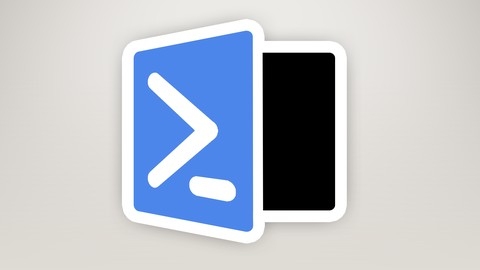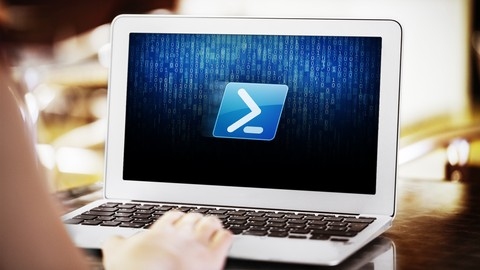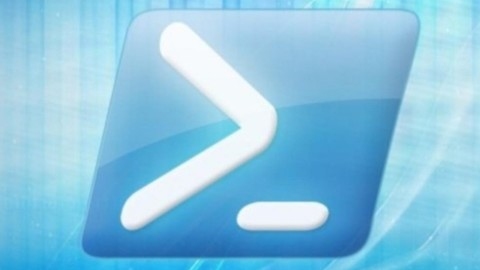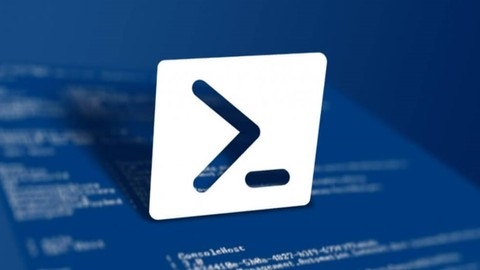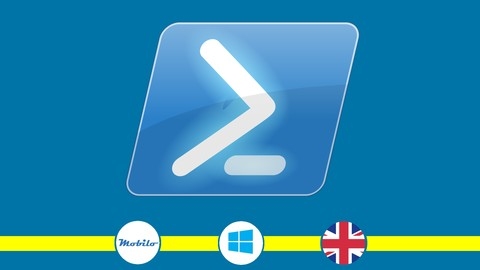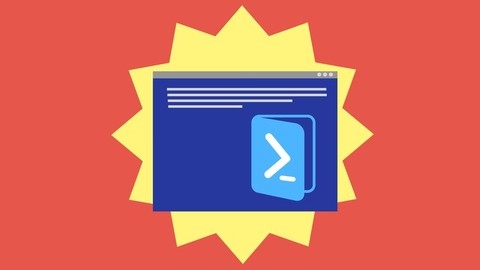PowerShell is a powerful command-line scripting language used to automate tasks and manage systems in Windows environments.
It’s a versatile tool that can be used to perform various administrative actions, configure software, and automate repetitive processes, saving time and effort.
By learning PowerShell, you can gain valuable skills that are highly sought after by employers in IT and system administration roles.
Finding the right PowerShell course on Udemy can be a challenge, with so many options available.
You’re looking for a course that is comprehensive, engaging, and taught by experienced professionals.
You want to learn the fundamentals of PowerShell scripting, but also delve into more advanced topics and practical applications.
For the best PowerShell course overall on Udemy, we recommend “PowerShell: Step-by-step.”
This course stands out for its clear explanations, practical examples, and focus on real-world applications.
It covers everything from the basics of PowerShell to advanced scripting techniques, including topics like working with objects, automating tasks, and managing systems.
While this is our top choice, other excellent courses are available on Udemy.
Keep reading to explore our full list of recommendations and find the perfect course to take your PowerShell skills to the next level.
Master Microsoft PowerShell
You’ll start by learning how to get the latest version of PowerShell installed and running on your system.
From there, the course dives into the basics of PowerShell, including the console, data types, comparison operators, cmdlets, aliases, and how to access the built-in help system.
This lays the foundation for working with objects, which is a core concept in PowerShell.
You’ll learn how to sort, filter, loop through, and store objects in arrays and hash tables.
Once you have a solid grasp of objects, the course moves on to formatting, saving, and importing data.
You’ll learn how to present data in different formats, save output to files on your hard drive, and quickly import data from CSV files.
With the fundamentals covered, you’ll then learn how to create your own functions and scripts.
This includes understanding the Integrated Scripting Environment (GUI), defining parameters, calling cmdlets and .NET functions, and creating scripts that accept parameters.
To solidify your skills, the course includes a practice problem where you’ll write a script to organize files based on specific requirements.
You’ll define parameters, create functions, implement the main processing logic, and end up with a completed script.
Throughout the course, you’ll work with key PowerShell concepts like cmdlets, aliases, arrays, hash tables, and strings.
The lectures are hands-on, allowing you to follow along and gain practical experience with each concept.
Introduction to Windows PowerShell 5.1
You’ll start by understanding the power of PowerShell and its system requirements.
Then, you’ll dive into the basics, including the text-based console, the Intelligent Scripting Environment (ISE), and setting up Visual Studio Code for scripting.
One of the crucial aspects covered is getting help and finding commands within PowerShell’s built-in help system.
You’ll learn the command syntax, working with objects, properties, methods, and the pipeline.
The course also covers PowerShell providers, which allow you to interact with different data stores like file systems and the registry.
You’ll gain hands-on experience with variables, arrays, loops (for, while, do), conditional statements, and functions.
If you don’t have access to a production environment, the course guides you through setting up a virtual lab using VirtualBox and Windows Server 2019, including configuring Active Directory.
The course equips you with essential tools for administrators, such as retrieving network information, installed applications, running processes, and scheduled tasks.
You’ll learn to configure PowerShell execution policies, install server roles, create scheduled tasks, and use splatting and MSU updates.
Active Directory administration is covered in-depth, including creating Organizational Units (OUs), managing user accounts, and moving users between groups and OUs.
File manipulation with CSV, XML, and JSON formats is also taught, along with a crash course on Desired State Configuration (DSC) and enabling PSRemoting with Group Policy.
The course culminates with a PowerShell remoting challenge, where you’ll perform tasks like renaming computers, changing passwords remotely, copying files, exporting logs, creating folders, and automating tasks with the Task Scheduler.
Finally, you’ll learn to install PowerShell modules from the gallery and create your own custom modules, complete with automated testing using Pester.
Learning Windows PowerShell
If you’re looking to automate tasks, manage systems, or work more efficiently with Windows, this course is an excellent choice.
You’ll start by understanding the history and advantages of PowerShell over traditional command prompts like CMD.
The course covers the seamless integration of PowerShell with .NET Framework, enabling you to leverage a vast array of pre-built functionality.
Once you’ve grasped the basics, you’ll dive into setting up your PowerShell environment, including installing the latest version, configuring the console, and exploring various IDEs (Integrated Development Environments) and profiles for customization.
A significant portion of the course focuses on learning essential PowerShell commands, or cmdlets.
You’ll master techniques like using Get-Help for documentation, Get-Command for discovering available cmdlets, and Get-Member for inspecting objects.
The course also covers formatting output, understanding the pipeline, and leveraging tab completion for efficiency.
Scripting is a core aspect of PowerShell, and you’ll learn how to create, execute, and parameterize scripts.
You’ll work with variables, constants, comparison operators, conditional statements, loops, and even regular expressions for text manipulation.
The course introduces you to PowerShell providers, which provide access to different data stores like the file system, registry, and environment variables.
You’ll learn how to navigate and manage these data stores using familiar cmdlets.
Working with files and folders is a common task, and the course covers reading, writing, and outputting data in various formats like HTML, XML, and CSV.
This knowledge is invaluable for automating data processing and reporting tasks.
System administration is another area where PowerShell shines, and you’ll learn how to manage processes and interact with WMI (Windows Management Instrumentation) for low-level system management.
Finally, the course introduces the latest features in PowerShell version 5, ensuring you’re up-to-date with the latest enhancements and capabilities.
PowerShell for Active Directory Administrators
You’ll start by learning the fundamentals of the PowerShell console and its features, including logging, help, and the Integrated Scripting Environment (ISE).
From there, the course dives into practical Active Directory tasks using PowerShell.
You’ll learn how to create new user accounts, both manually and by importing CSV files.
The course covers managing computer accounts, groups, and even finding inactive accounts through PowerShell queries.
Updating and modifying existing AD objects is also covered.
One key aspect is learning PowerShell remoting, which allows you to remotely connect to servers and perform administration tasks.
The course emphasizes securing this feature by restricting access to specific IPs, users, and interface types.
The syllabus highlights the Active Directory Administrative Center (ADAC) and its integration with PowerShell.
You’ll also learn about implementing the Active Directory Recycle Bin feature.
Additionally, you’ll explore PowerShell providers, which provide access to different data sources, and how to use them to locate domain controllers and services within your environment.
Notably, the course even covers installing a new domain controller entirely through PowerShell scripting.
Throughout the lessons, you’ll receive practical guidance on using PowerShell for common Active Directory tasks, from user and computer management to advanced features like remoting and ADAC integration.
Windows PowerShell in less than 2 hours - 15 hands on demos!
This course starts by familiarizing you with PowerShell, explaining what it is and how it differs from the traditional Windows command prompt.
You’ll learn about the two versions, Windows PowerShell and PowerShell Core, and how to install the latter.
Moving on, the course dives into the basics of PowerShell, covering command syntax, verbs, aliases, parameters, and essential commands like Get-Help and Get-Command.
You’ll also learn about PowerShell’s object-oriented nature and how to navigate the command history and transcripts.
One of the key aspects of the course is gleaning data with PowerShell.
You’ll learn how to retrieve information about your computer’s hardware, operating system, performance counters, event logs, network settings, and file system.
This includes exploring WMI (Windows Management Instrumentation) and CIM (Common Information Model), which provide access to a wealth of system data.
The course also covers variables in PowerShell, a crucial concept for storing and manipulating data.
You’ll get hands-on experience with creating and using variables through interactive demos.
Finally, the course introduces you to PowerShell remoting, which allows you to execute commands on remote computers over the network.
You’ll see a demo of remoting in action, connecting to machines in the instructor’s home office environment.
Throughout the course, you’ll benefit from numerous hands-on demos that reinforce the concepts and provide practical experience with PowerShell.
PowerShell: Step-by-step
The course starts by explaining the different PowerShell tools available in Windows, such as the PowerShell console and the PowerShell ISE.
You’ll learn how to set up your lab environment (if desired) and determine which version of PowerShell you’re running on your personal computer.
The course also covers the key differences between PowerShell and the traditional Windows Command Prompt.
One of the course’s strengths is its focus on practical skills.
You’ll learn how to use PowerShell parameters and tab completion effectively, making it easier to work with cmdlets.
The course also covers the PowerShell help system, teaching you how to use Get-Help and other commands to understand syntax and find information.
As you progress, you’ll dive into more advanced topics like aliases, running unsupported commands, and using the Show command and Out-GridView to display content in different formats.
The course explains the PowerShell pipeline in detail, demonstrating how to combine multiple commands together.
You’ll also learn about PowerShell transcripts, object members, hash tables, arrays, and operators.
The course covers exporting items, understanding CIM (Common Information Model), and using CIM to retrieve hardware and software information from local and remote computers.
Variables, profile scripts, execution policy levels, and script constructs like ForEach and ElseIf are covered in depth.
The course teaches you how to create functions, custom PowerShell modules, and how to pause script execution using Read-Host and Start-Sleep.
Additionally, you’ll learn about script parameters, finding error messages using the $Error variable, and using PowerShell Remoting to connect to remote computers and servers.
Interestingly, the course even includes a section on using ChatGPT to create PowerShell scripts.
Advanced Scripting & Tool Making using Windows PowerShell
This course starts by strengthening your basics, covering installation, the PowerShell ISE & console, and security models like execution policies.
You’ll then dive into programming building blocks, exploring variables, data types, input/output handling, comparisons, loops, collections, methods, and error handling.
A quick wrap-up of Windows Server basics follows, covering processes, services, and the Task Scheduler.
The course equips you with advanced file handling techniques for text, CSV, XML, and JSON formats.
It demystifies PowerShell’s object-oriented nature, teaching you about objects, pipelines, formatting, and creating custom classes.
You’ll learn to install software remotely on multiple computers using PowerShell scripts.
The course takes you on a deep dive, covering email automation, report generation, script signing, ISE snippets, web scraping, and executing web content as scripts.
Databases are not left out - you’ll connect PowerShell to databases and perform CRUD (Create, Read, Update, Delete) operations.
Windows Management Instrumentation (WMI) is explored in-depth for system management.
Event Viewer integration teaches you to access and write logs programmatically.
Advanced functions, modules, and building graphical user interfaces (GUIs) using PowerShell and Visual Studio are also covered.
Throughout, you’ll apply your knowledge to automate real-world tasks like website monitoring, report generation, and system administration.
PowerShell - essential course with labs
You’ll start by learning how to work with the PowerShell console, mastering useful keyboard shortcuts and common cmdlets.
The course covers the Integrated Script Editor (ISE), a powerful tool for writing and testing scripts.
You’ll explore aliases, a handy way to create shortcut names for cmdlets.
Getting help is crucial, so you’ll learn how to effectively use Get-Help and Get-Command to find the right cmdlets and understand their usage.
The course dives deep into passing parameters to commands, including common parameters like WhatIf and Confirm for testing commands safely.
A major focus is working with the pipeline, the core of PowerShell’s power.
You’ll learn how to connect cmdlets, sort and filter objects, measure properties, select specific columns, and even add calculated properties on the fly.
Importing, exporting, and converting data formats are also covered.
The course guides you through variables, from basic usage to working with lists and typed variables like dates and strings.
You’ll learn control flow statements like If, Switch, While, and For loops, which are essential for writing scripts that make decisions and repeat actions.
Throughout the course, you’ll complete hands-on labs to reinforce the concepts and gain practical experience.
Video lectures, quizzes, and detailed answers ensure you understand each topic thoroughly.
The Complete Windows PowerShell 5.1/7 : Beginner To Advanced
You’ll start by getting oriented with the PowerShell console and understanding the differences between various PowerShell versions.
The course guides you through installing PowerShell 7 on Windows, Linux, and macOS, ensuring you’re ready for the lessons ahead.
Once you’ve set up your environment, you’ll dive into finding and discovering commands within PowerShell.
You’ll learn about PSSnapins, modules, and how to import them into your current session.
The course also covers using aliases to incorporate Linux commands into PowerShell.
Interpreting the help documentation is crucial, and the course dedicates a chapter to this topic.
You’ll learn how to update the help resources, explore command syntax, understand parameter positions, and run commands using the correct syntax.
The course then moves on to the practical application of PowerShell commands.
You’ll learn how to find and run commands related to processes, aliases, and even external commands.
Additionally, you’ll gain insights into working with providers and drives, enabling you to interact with the file system and registry.
Variables, strings, hashtables, and core operators are essential concepts covered in the course.
You’ll explore different types of variables, arrays, and associative arrays (hashtables).
Regular expressions are also introduced, allowing you to identify and analyze string patterns effectively.
The course delves into advanced topics like transactions, enabling you to manage transacted operations within PowerShell.
You’ll learn how to start, commit, and rollback transactions, as well as work with independent transactions.
As you progress, you’ll dig deeper into PowerShell variables, including environmental and variable providers.
The course covers reading and setting environmental variables, using cmdlets for variable manipulation, and understanding variable scopes and hierarchies.
Comparison and logical operators are explored in-depth, covering string literal comparisons, the -like comparator, join and split operators, boolean operators, range operators, and more.
Real-world examples are provided to solidify your understanding of these concepts.
Throughout the course, you’ll encounter quizzes and exercises that reinforce the concepts you’ve learned, ensuring you’re ready to tackle real-world PowerShell scripting challenges.
PowerShell from Beginner To Sheller And Scripter
This course starts by covering the basics of PowerShell, including its versions, cmdlets, and why you should learn it.
You’ll learn how to use the PowerShell shell, execute cmdlets, and work with the pipeline.
The course then dives into writing scripts in PowerShell.
You’ll learn about variables, data types, operators, and how to get user input using Read-Host.
It covers decision-making with if statements, looping with while and foreach loops, and working with arrays.
You’ll also learn how to import and export data from CSV files.
One of the key focuses is on working with objects in PowerShell.
You’ll learn how to retrieve object properties and methods, and how to filter and manipulate objects using cmdlets like Where-Object and Select-Object.
The course also covers PowerShell remoting, which allows you to execute commands on remote machines.
You’ll learn how to enable remoting, establish one-to-one and one-to-many sessions, and use persistent sessions.
Additionally, the course includes modules on Active Directory, where you’ll learn how to create and manage users, organizational units (OUs), and user properties using PowerShell cmdlets.
Throughout the course, you’ll work on various lab challenges to reinforce your understanding of the concepts.
The final project challenges you to create a comprehensive script that combines multiple PowerShell techniques you’ve learned.
